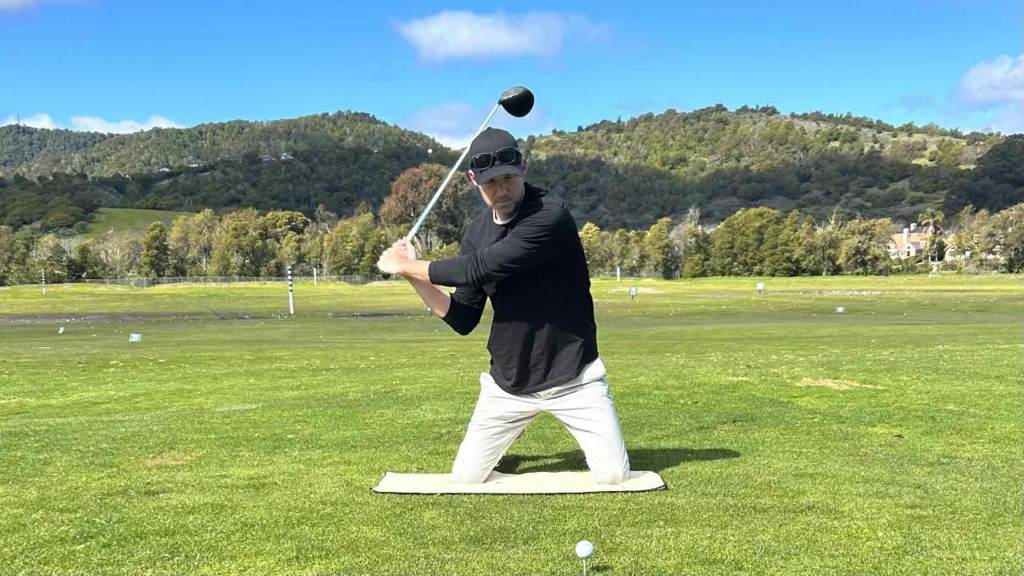Mental Checklist for Attempting a Difficult Golf Trick Shot

Golf trick shots captivate audiences with their blend of skill, creativity, and precision, turning an ordinary round into a spectacle. Whether you’re a seasoned golfer or an enthusiast inspired by viral videos, attempting a difficult trick shot requires more than just technical ability—it demands a sharp mental approach. At The Hickory Golf Hub, we believe that mastering the mental game is as crucial as perfecting your swing for these challenging feats. This article provides a comprehensive mental checklist to help you execute a difficult golf trick shot with confidence and success, ensuring you’re prepared for the unique demands of such shots.
Preparation: Setting the Stage for Success
Before attempting a trick shot, thorough preparation lays the foundation for success. Start by selecting the right equipment, ensuring your clubs are in optimal condition. For instance, if you’ve recently regripped your clubs, you might wonder how long after regripping clubs can I play. Typically, you should wait 24 hours for the grip adhesive to set fully, ensuring a secure hold during your shot. Next, visualize the shot in detail, imagining the ball’s trajectory and landing spot. This mental rehearsal builds confidence and reduces uncertainty. Additionally, assess the environment—wind, terrain, and obstacles can significantly impact your shot. According to Golf Digest, environmental awareness is critical for precision in complex shots. By preparing meticulously, you align your mind and body for the challenge ahead.
Focus: Sharpening Your Mental Edge
Maintaining focus is paramount when attempting a difficult trick shot. Distractions, whether from a crowd or your own doubts, can derail your performance. Begin by setting a clear intention for the shot, narrowing your attention to the task. Deep breathing exercises can help calm nerves and enhance concentration, as noted by the Mayo Clinic’s guide to stress management. Moreover, break the shot into smaller, manageable steps—stance, grip, swing, and follow-through. This segmented approach prevents overwhelm and keeps your mind anchored. Transitioning smoothly between these steps ensures your focus remains unwavering, even under pressure.
Confidence: Building Belief in Your Abilities

Confidence is the cornerstone of any successful trick shot. Doubt can creep in, especially when attempting something unconventional, but a strong belief in your skills counters this. Reflect on past successes, no matter how small, to boost your self-assurance. For example, recall a time you nailed a challenging putt or drove the ball with precision. Additionally, practice the specific trick shot in controlled settings to build familiarity. Repetition breeds confidence, making the shot feel less daunting. However, avoid overthinking—trust your instincts and let muscle memory guide you. A confident mindset transforms a risky shot into an achievable goal.
Adaptability: Adjusting to Unexpected Challenges
Trick shots often involve unpredictable variables, such as uneven lies or sudden gusts of wind. Being adaptable is essential for success. Before swinging, evaluate the conditions and be ready to tweak your approach. For instance, if the wind shifts, adjust your club selection or aim slightly off-target to compensate. Furthermore, stay open to modifying the shot itself—if the original plan feels unfeasible, consider a simpler variation that still achieves the desired effect. Flexibility in your thinking allows you to navigate obstacles without losing composure, ensuring you remain in control.
Patience: Embracing the Learning Curve
Patience is a virtue when tackling difficult trick shots. These shots often require multiple attempts to perfect, and frustration can undermine your efforts. Accept that failure is part of the process—each miss provides valuable feedback. Instead of rushing to retry, take a moment to analyze what went wrong. Was your stance off? Did you misjudge the distance? By approaching each attempt methodically, you refine your technique over time. Moreover, pacing yourself prevents burnout, keeping your enthusiasm high. Patience ensures you stay committed to mastering the shot, no matter how many tries it takes.
Execution: Putting It All Together
When it’s time to execute, your mental checklist comes into play. First, revisit your visualization, picturing the shot’s success. Next, double-check your setup—grip, stance, and alignment must be precise. As you prepare to swing, clear your mind of distractions and focus solely on the present moment. Trust your preparation and let your body take over. After the shot, whether successful or not, reflect briefly on the outcome. What worked? What needs adjustment? This reflective practice, as recommended by Golf.com, strengthens your mental game for future attempts. By following this structured approach, you maximize your chances of pulling off the trick shot.
Common Pitfalls to Avoid
Even with a solid mental checklist, certain pitfalls can sabotage your trick shot. Overcomplicating the shot is a common mistake—stick to techniques within your skill level. Additionally, ignoring environmental factors, like wet grass or slopes, can lead to miscalculations. Another trap is succumbing to pressure from spectators or self-imposed expectations. Stay focused on your process, not the outcome. Finally, neglecting physical preparation, such as stretching or warming up, can hinder performance. Addressing these pitfalls proactively keeps your mental and physical game sharp.
Tips for Consistent Improvement
To elevate your trick shot game over time, incorporate these habits:
- Practice Regularly: Dedicate time to practice trick shots in varied conditions to build versatility.
- Record Your Attempts: Filming your shots helps identify flaws in technique or setup.
- Learn from Others: Watch professional trick shot artists on platforms like YouTube for inspiration and techniques.
- Stay Physically Fit: Core strength and flexibility enhance your ability to execute complex movements.
- Seek Feedback: A coach or experienced golfer can offer valuable insights to refine your approach.
By integrating these habits, you create a cycle of continuous improvement, making difficult trick shots more achievable.
Read Also:
Why is Golf Generally an Expensive Sport?
How to Become a Professional Soccer Player
FAQs
What is the most important mental factor for a golf trick shot?
Focus is critical. A clear, distraction-free mind allows you to execute each step of the shot with precision, increasing your chances of success.
How can I stay calm under pressure during a trick shot?
Deep breathing and visualization techniques help calm nerves. Practicing the shot in low-stakes settings also builds confidence for high-pressure moments.
How long should I practice a trick shot before attempting it in front of others?
It depends on the shot’s complexity and your skill level, but aim for 10-20 hours of focused practice to build confidence and consistency.
Can beginners attempt difficult golf trick shots?
Yes, but start with simpler variations and gradually progress. Focus on mastering fundamentals like grip and stance before tackling advanced shots.
How do I choose the right club for a trick shot?
Consider the shot’s distance, trajectory, and obstacles. Test different clubs in practice to find the best fit for the specific trick.
Conclusion
Attempting a difficult golf trick shot is as much a mental challenge as it is a physical one. By following a structured mental checklist—preparation, focus, confidence, adaptability, patience, and execution—you set yourself up for success. Avoiding common pitfalls and adopting consistent improvement habits further enhance your skills. Whether you’re aiming to impress friends or simply test your limits, this approach ensures you tackle trick shots with clarity and purpose. So, grab your clubs, visualize the shot, and swing with confidence—your next trick shot could be a hole-in-one moment.







